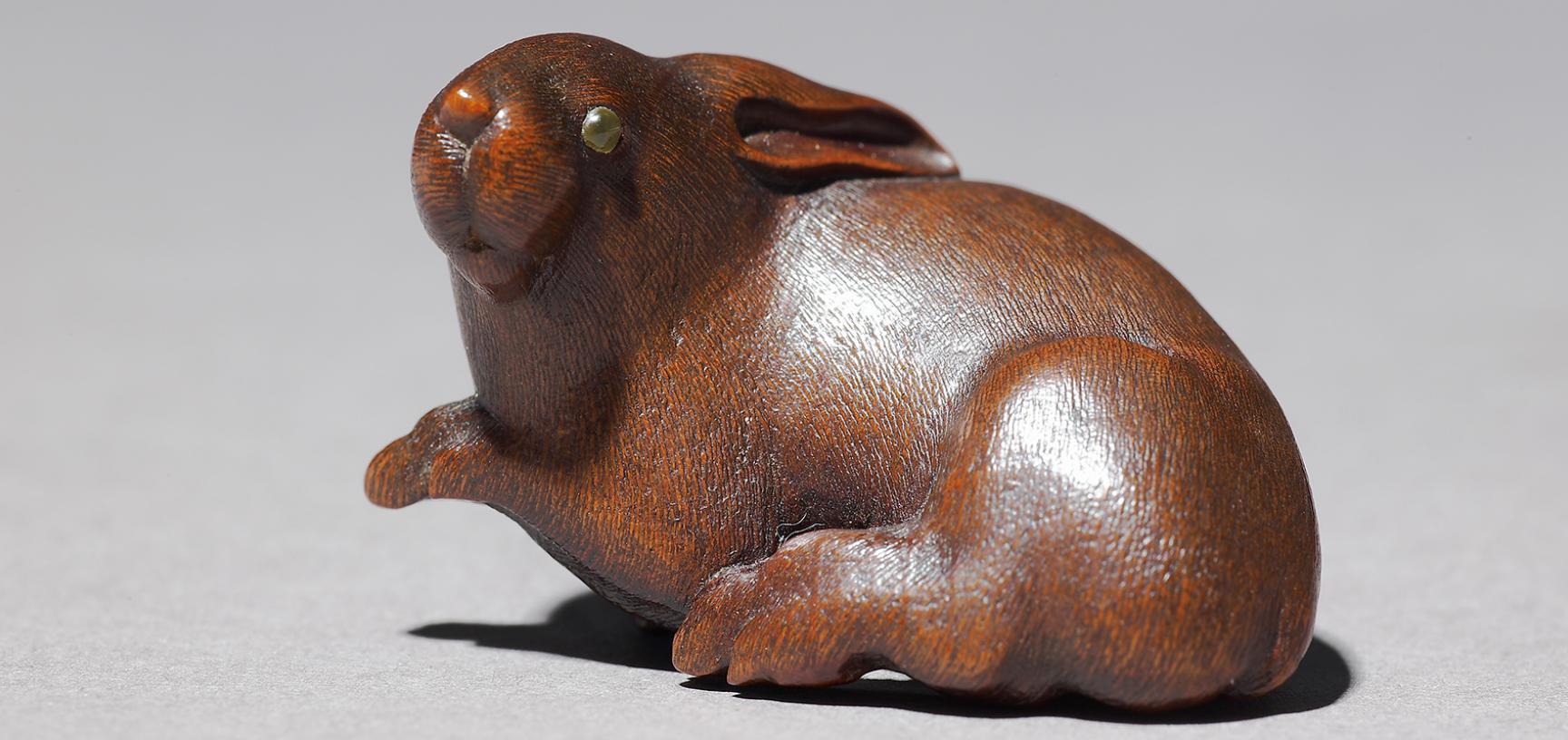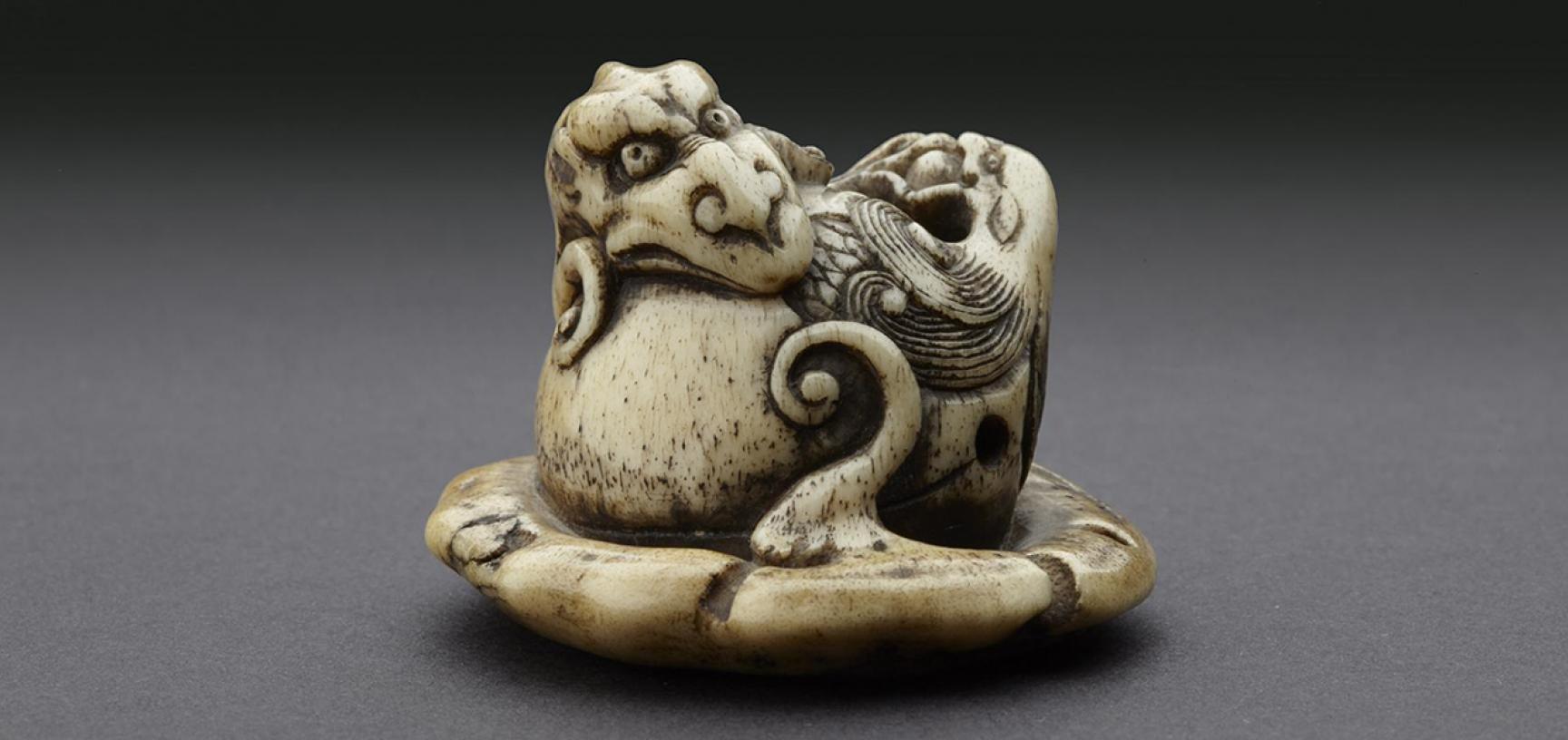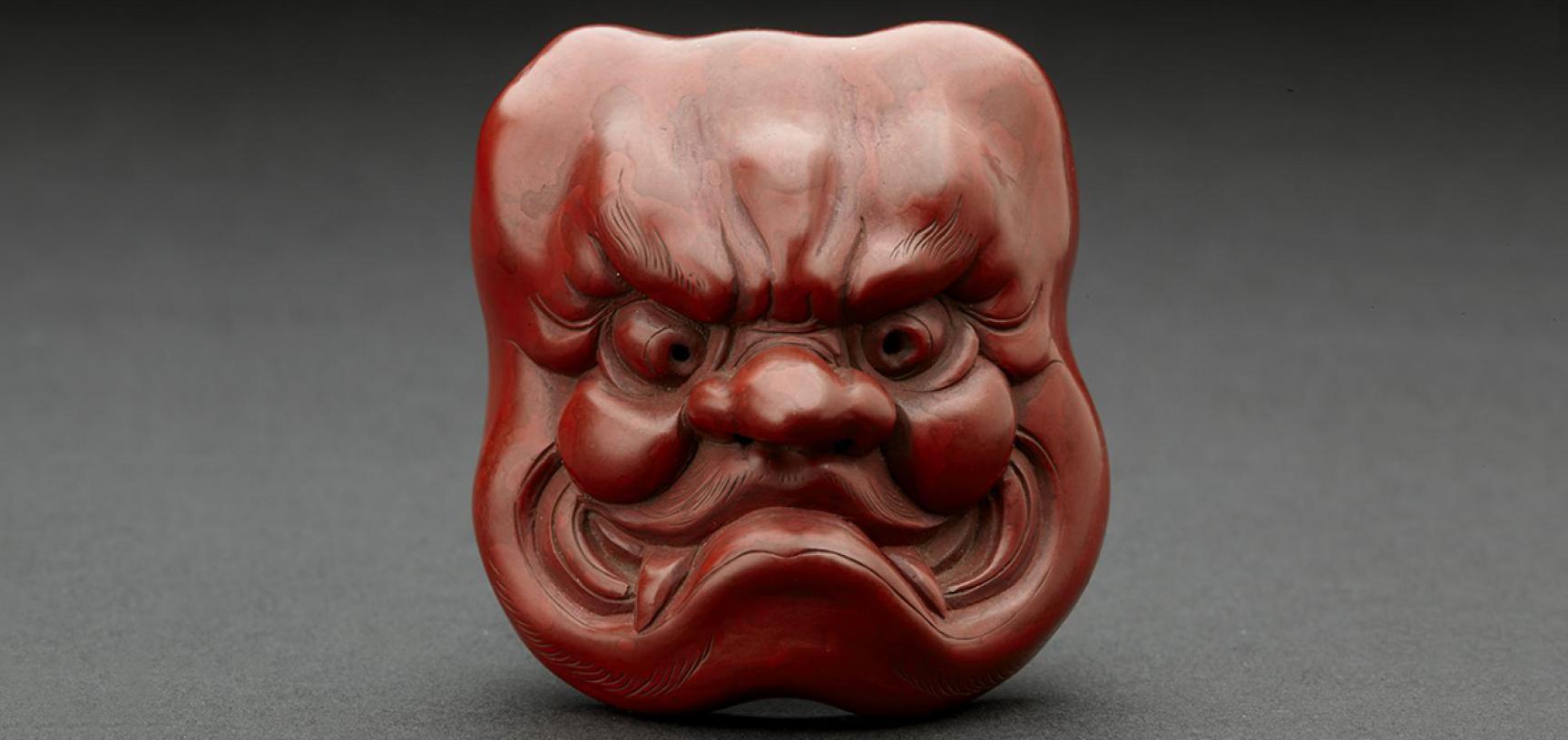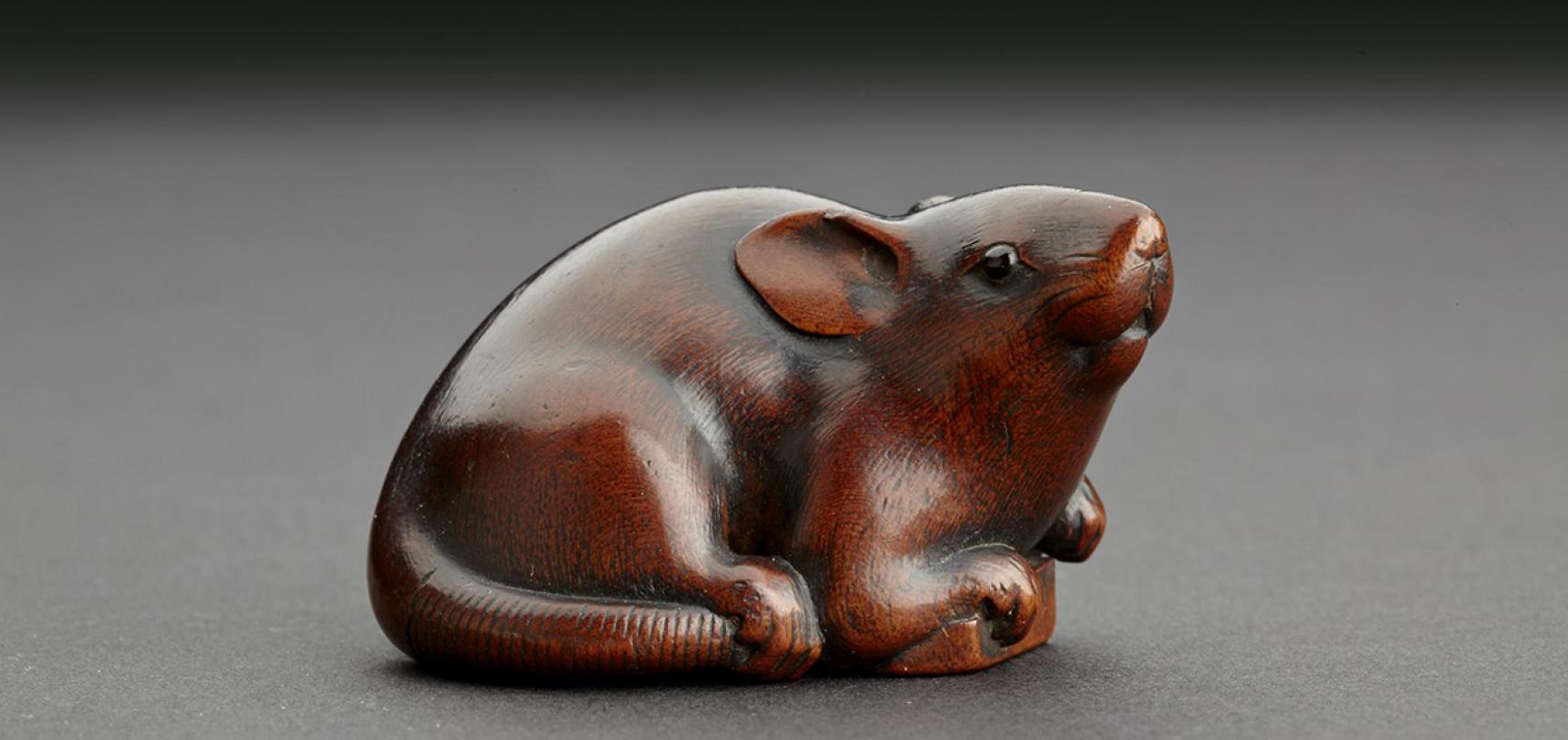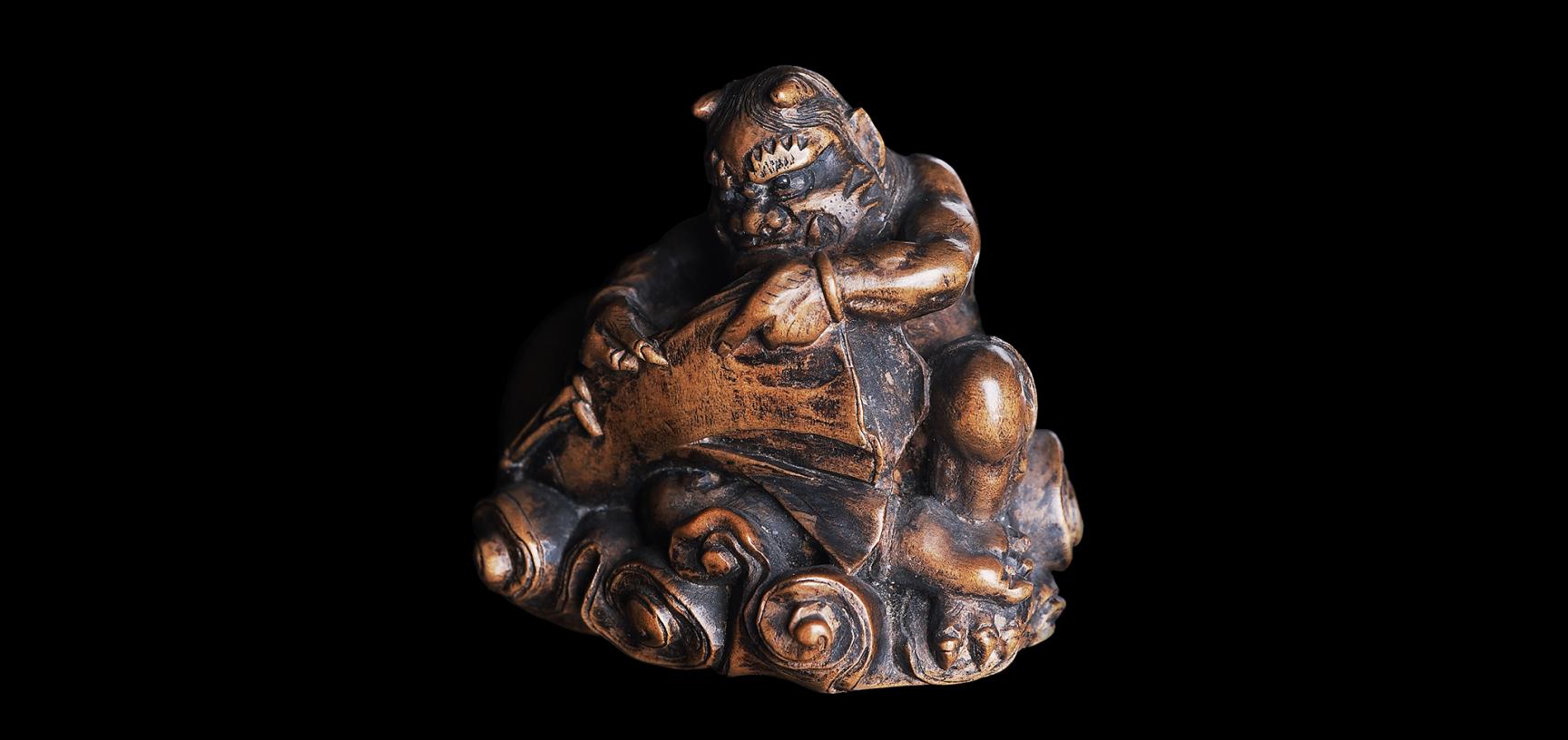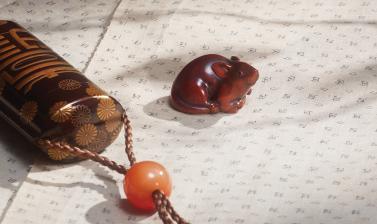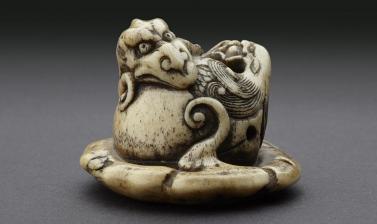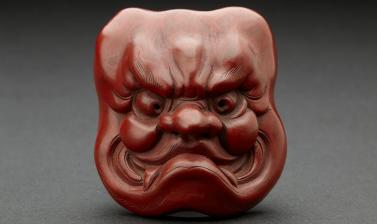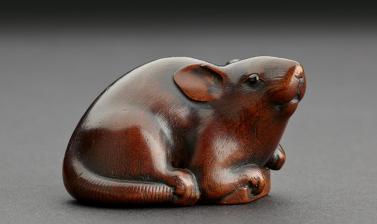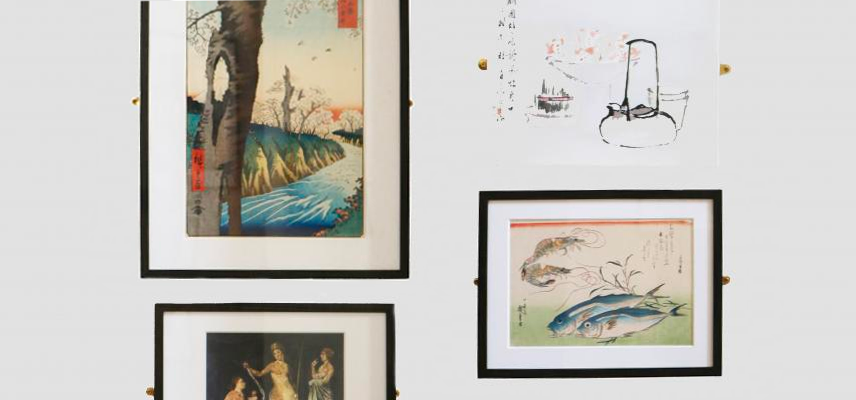NETSUKE
Fashionable accessories for men
Until the 19th century all Japanese citizens wore a kimono, fastened by an obi sash. Small personal items such as purses, pipes or medicine containers were hung from the sash by silk cords. The cord was threaded through a bead, or ojime, then tucked behind the kimono sash and secured with a small ornamental toggle or counterweight called a netsuke.
Netsuke need to be small and light, and are usually flat or rounded in form, with no sharply protruding sections that might catch on the kimono fabric. They are carved from a wide range of materials, wood and ivory being most commonly used. They take as themes natural objects such as animals, fruits or flowers; mythical creatures and supernatural beings; theatrical masks; and historical, literary or everyday figures. Worn by men of all levels of society, netsuke became particularly fashionable among the merchant class during the Edo period (1600–1868).
Japanese society under the Tokugawa clan of military rulers was very hierarchical, with samurai – the military nobility – at the top and merchants at the bottom. The merchants had no political power and were banned from displaying their wealth too openly. In spite of these restrictions, they loved to spend their money on fashion, arts and the high life. Wearing small accessories such as netsuke was a popular way of indicating their wealth and status.
Netsuke have been much admired in the West since the late 1800s, when they were collected as exotic objects d’art that epitomised Asian quaintness and ingenuity.
View on our online Collection Online Site: EA1996.35 . EA1956.1732 . EA1956.3227 . EA1996.24 . EA1976.12
License these images - visit the Ashmolean Image Library
FIND OUT MORE
EXPLORE THE GALLERY
COLLECTIONS ONLINE
BUY THIS PRINT
BOOKS AND GIFTS
Discover more in Manju: Netsuke from the Ashmolean Museum
Some of these items are featured in Manju: Netsuke from the Ashmolean Museum by Joyce Seaman
This book is available to buy in our online gift shop



